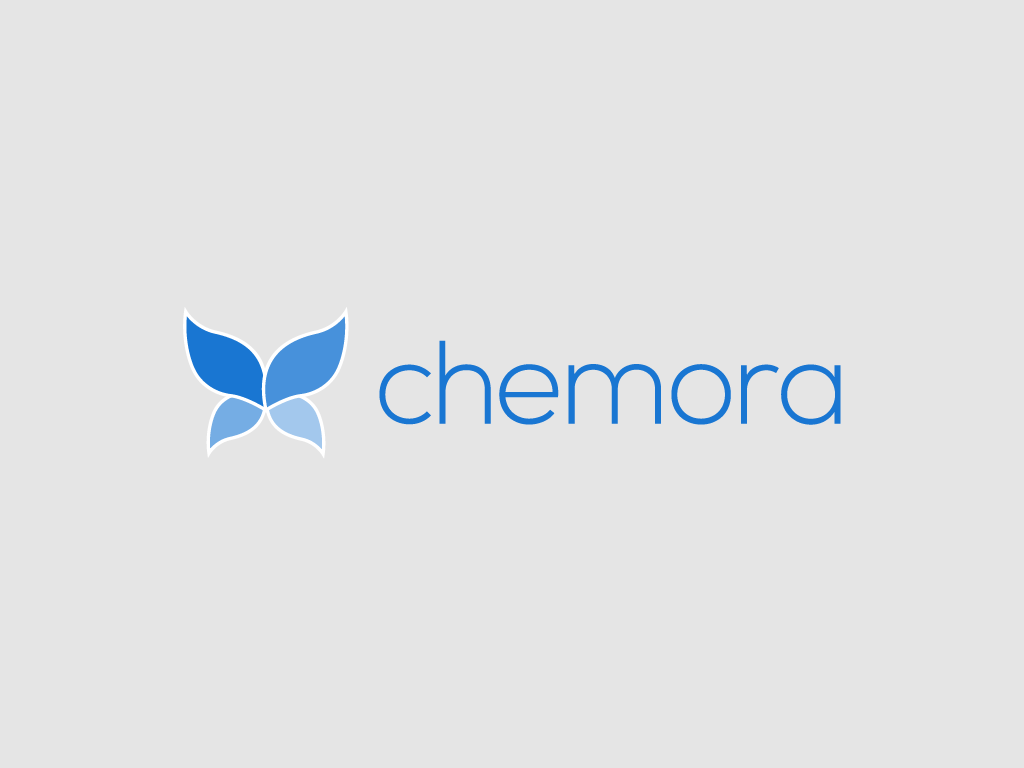Conducting user research for a healthcare app
When it gets to building a new product, software development is the easy part. Technology is available and all the parameters are within our control. We get to plan, populate the task list, and hit all the milestones one by one. Development of the Chemora healthcare app has been moving forward consistently, however, at one point we need to leave the building and meet with doctors and patients who will be using it.
What is Chemora again?
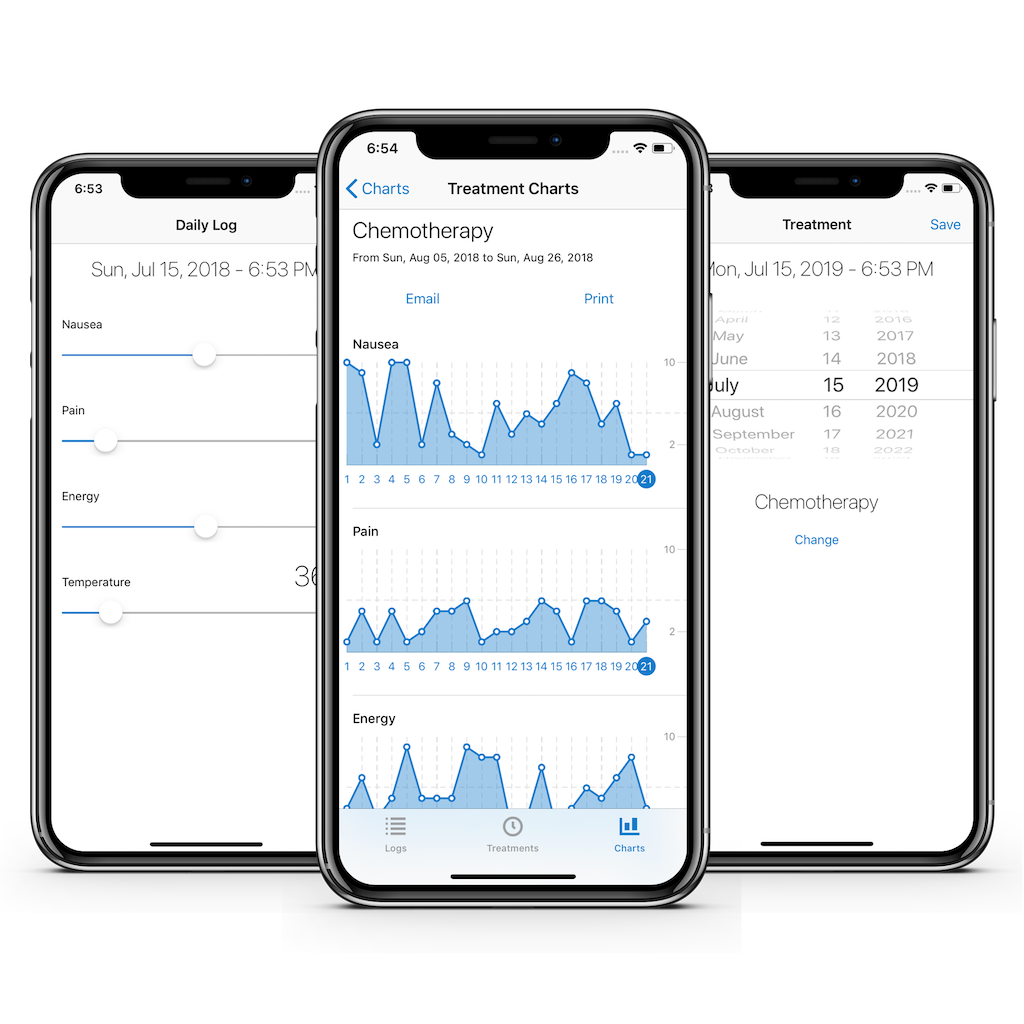
As a reminder, we developed Chemora for cancer patients who are going through their chemo and radiation oncology treatments. These patients keep a journal of their experience with pain, nausea, energy level, and body temperature which are the result of treatment side effects. Every 2 or 3 weeks they get to meet their oncologist and talk about their experience.
The problem is that after a few cycles, patients are having a hard time remembering their symptoms and side effects. They are still processing the shock of being diagnosed, and the impact that cancer is having on their lives and family. There is also such as Chemo Brain which is the foggy mind resulting from the treatments. A solution to this problem is for a patient to keep a journal of their symptoms and overall experience while going through the treatments.
Right now they receive a notebook and a pen at the beginning of their treatment. The problem is that a patient or their caregiver is in no mental shape to keep a proper and consistent journal. There is also no consistent format for the information to be recorded and reported to the oncologist.
We developed the Chemora app so patients can log their side-effect symptoms on a daily basis with minimum effort. Then, when their next appointment comes up, they can print or email a report for their oncologist. Chemora is not meant to be a medical device, diagnostic tool, or a means of keeping accurate data points. It is meant to be a more efficient tool than pen and paper.
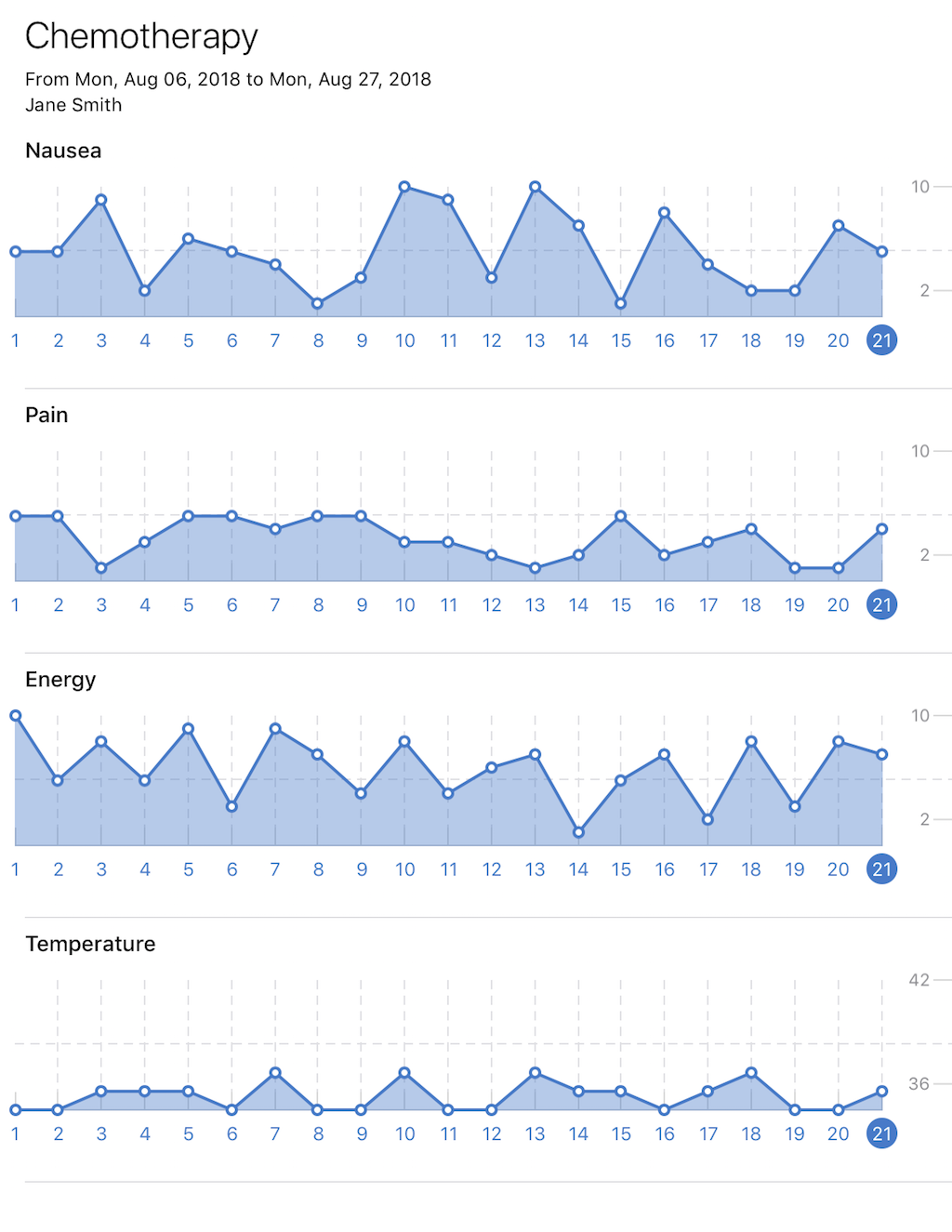
This is an example of a report generated by Chemora. Please keep in mind that this particular report contains arbitrary data points for demo purpose only.
Leaving the building and meeting with doctors and patients
User research for Cancer-related healthcare apps could be challenging. Patients are often too focused on keeping their lives together while receiving treatments. Oncologists are hard to reach, even by their own colleagues. We reached out to all the doctors and medical practitioners in our network to provide us with tips or perhaps put us in touch with a few oncologists. We used our social media channels as well. They told us that it would be best if we come up with a list of 3 to 5 questions before approaching them because oncologists are busy solving complex problems and making difficult decisions every day. Through our research, we learned that GPs and pediatricians could also benefit from Chemora.
Attending Cancer Education Forum
Last April we attended the 2018 Gynecologic Cancer Education Forum in Vancouver, BC organized by BC Cancer Foundation. First of all, please make a donation to this organization. The researchers and doctors at BCCF are doing an amazing job and have had great breakthroughs in treating and preventing cancer.
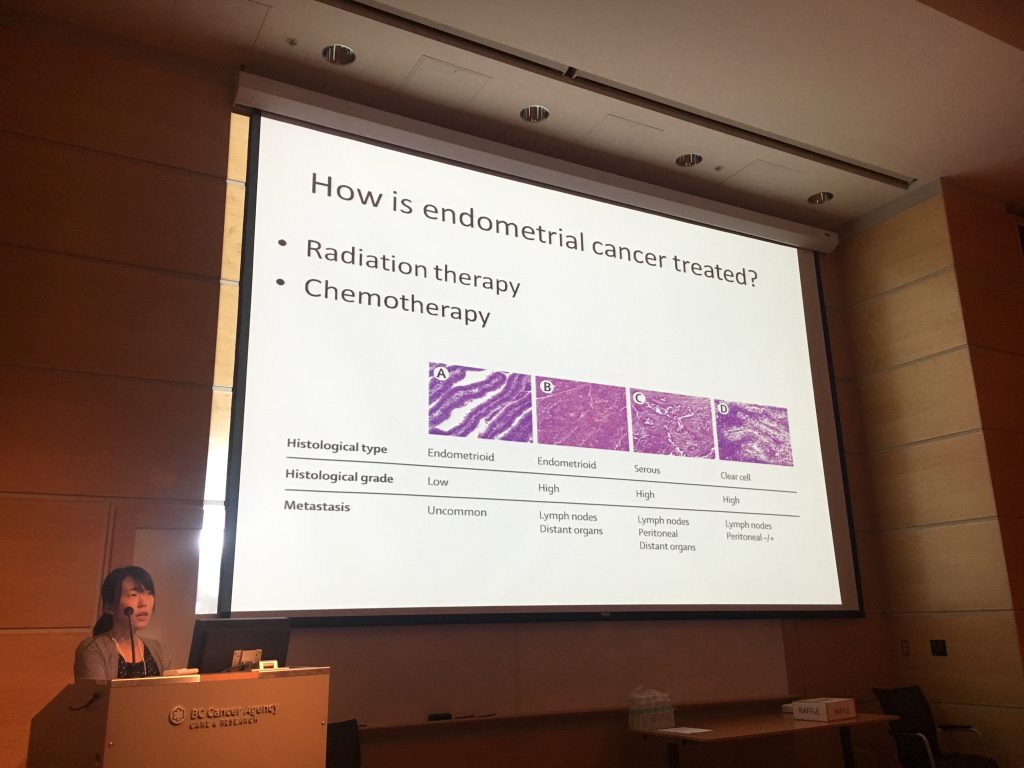
During this event, we had a chance to meet with some cancer patients, oncologists, and gynecologists in person. Mind you, explaining what we were working on and listening to them wasn’t a simple task. Older patients are generally not comfortable with technology and smartphones. Fortunately, their primary caregivers and family members seem to be more comfortable with technology and the overall feedback has been positive. One person pointed out that certain words and colours could trigger negative emotions or feelings of nausea. Apparently, patients who have been through oncology treatments develop negative associations with certain colours, spaces, objects, or words. This is a delicate issue that we need to consider in our app’s user experience design and I must say, we don’t have all the answers to that.
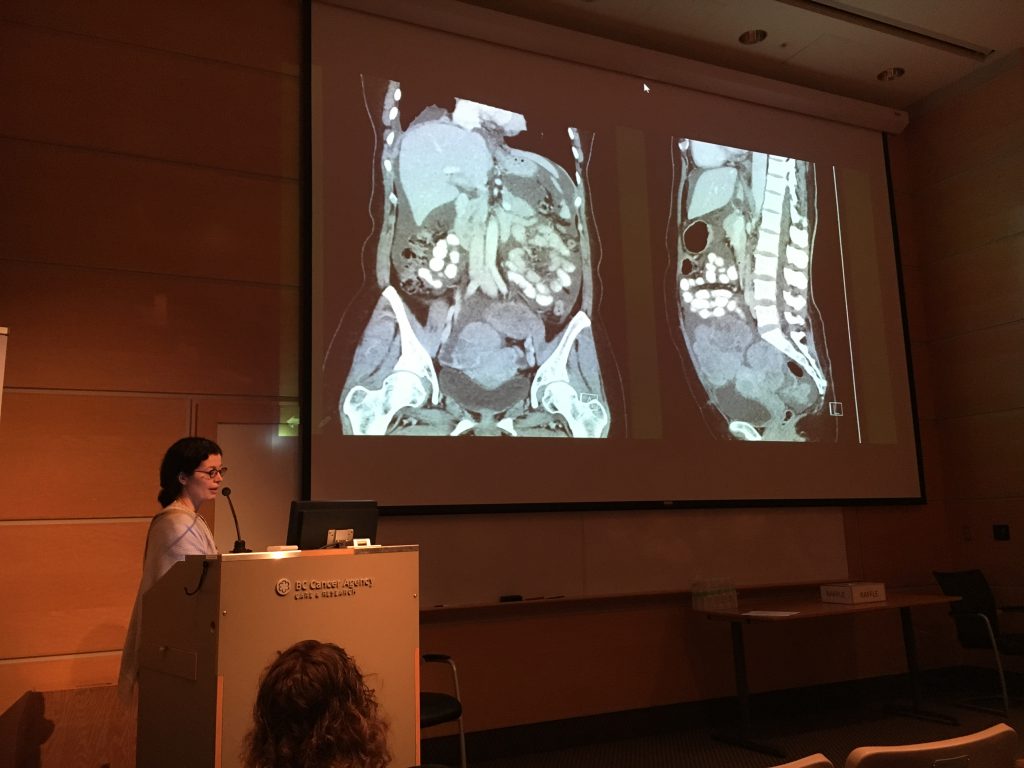
Meeting oncologists and gynecologists in person during the event was definitely better than communicating via email and social media. We learned quite a bit about their works and research through the presentation. We were pleased that all the physics, chemistry, and biology courses that we took in university were still coming useful today. The presenters did a great job simplifying their presentation for their audience which was mostly cancer patients, their caregivers, and of course other researchers.
Reading Chemora Charts
The reaction that we received from one oncologist about Chemora’s report was that she wouldn’t have time to go through every data point. We had to explain that the point of the report was the progression of symptoms. Unfortunately, charts and data points leave the impression of scientific accuracy and perhaps we need to take that into our user experience design. Treatment side effects such as pain, nausea, and energy level are hardly quantifiable. Doctors often ask for a scale of 1 to 10 description of such symptoms and that’s how Chemora data points are collected. They are still subjective and depend on how the patient is feeling at the moment.
Do we need to record the temperature?
Chemo and Radio oncologists were not sure about collecting body temperature. Normally the only critical time is when a patient has a fever which is the result of an infection. The patient’s immune system is weakened during an oncology treatment and any slight infection must be dealt with immediately and the patient needs to go to the ER. Immuno-oncology, however, does cause fever and flu-like symptoms, so recording body temperature on a daily basis and generating a report, may be a useful feature.
More suggestions
A gynecologist emphasized that her patients often forget their appointments and if there were better tools to notify them in advance. That’s not the focus of the Chemora app at the moment, but not so far off. The idea of aggregating patients’ data on a dashboard for doctors to remotely observe patients’ symptoms came up a few times. Perhaps through the same system, notifications could be sent out to patients about their upcoming appointments or any emergency situation that needed to be addressed.
We are still asking questions and listening
So far we have gathered plenty of useful feedback. We have found solutions to some, yet we know that this will be a work in progress. We yet have to follow up with the doctors and patients that we’ve met during the last few months and listen to their feedback before launching Chemora in the app store.
If you know any oncologists or health practitioners who primarily work with cancer patients, we appreciate it if you put us in touch with them. You can contact us on our website or facebook.



